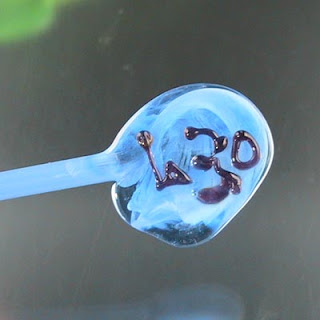 Two new MUST HAVE colours - boy are these fabulous! These are new colours from Moretti - not odd lots but regular, production colours.
Two new MUST HAVE colours - boy are these fabulous! These are new colours from Moretti - not odd lots but regular, production colours.First Up - Laguna Blue - Mor630. This is a lovely streaky blue. It looks like a translucent as a rod, but works up to a transparent blue streaked with opaque blue. No effort required. This is delightful!

 Next up - Kiwi - Mor620 - a name evoking the bright green flesh of the fruit of the Kiwi, as opposed to the hairy brown outer layer, or the beady-eyed, elusive and flightless bird of New Zealand (which also has a hairy brown outer layer.) ;-)
Next up - Kiwi - Mor620 - a name evoking the bright green flesh of the fruit of the Kiwi, as opposed to the hairy brown outer layer, or the beady-eyed, elusive and flightless bird of New Zealand (which also has a hairy brown outer layer.) ;-)Bright transparent green streaked with opaque - a mouthwatering colour. Truly juicy.
Think backgrounds for florals. Maybe stringers for leaves - haven't tried that yet - not sure if the streakiness works in a stringer, will have to check. Think effortless interesting spacers! Definite recommended!





















